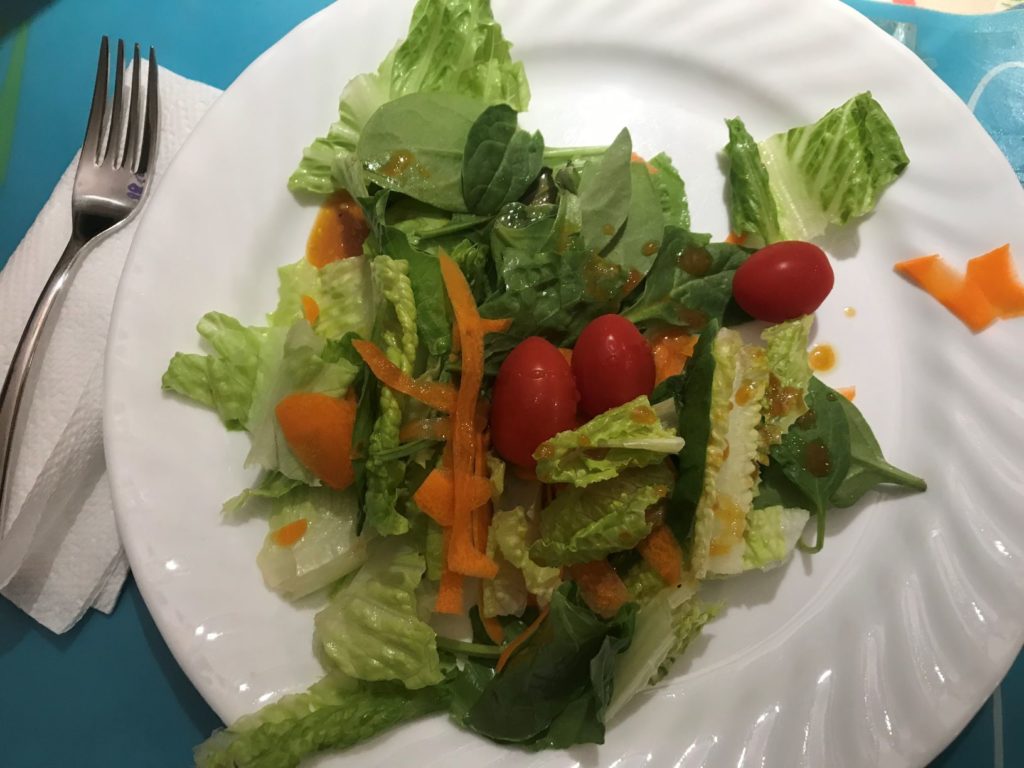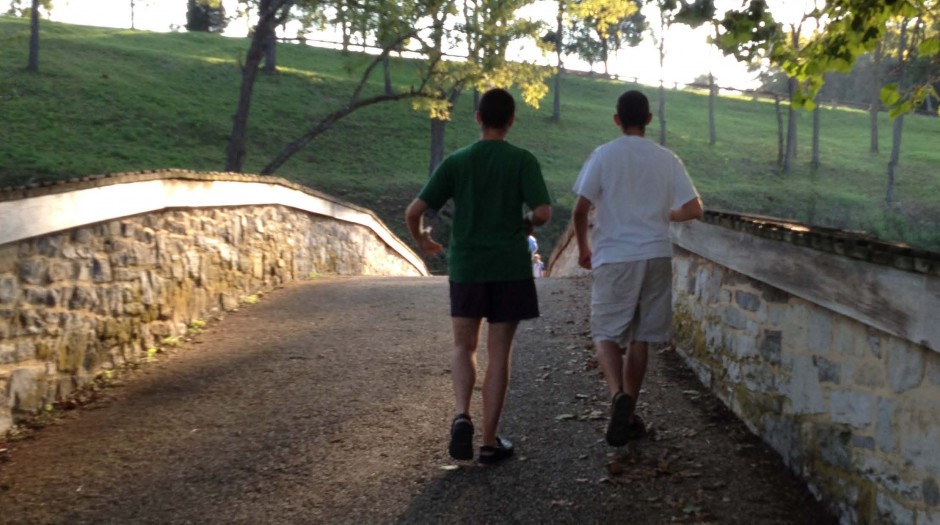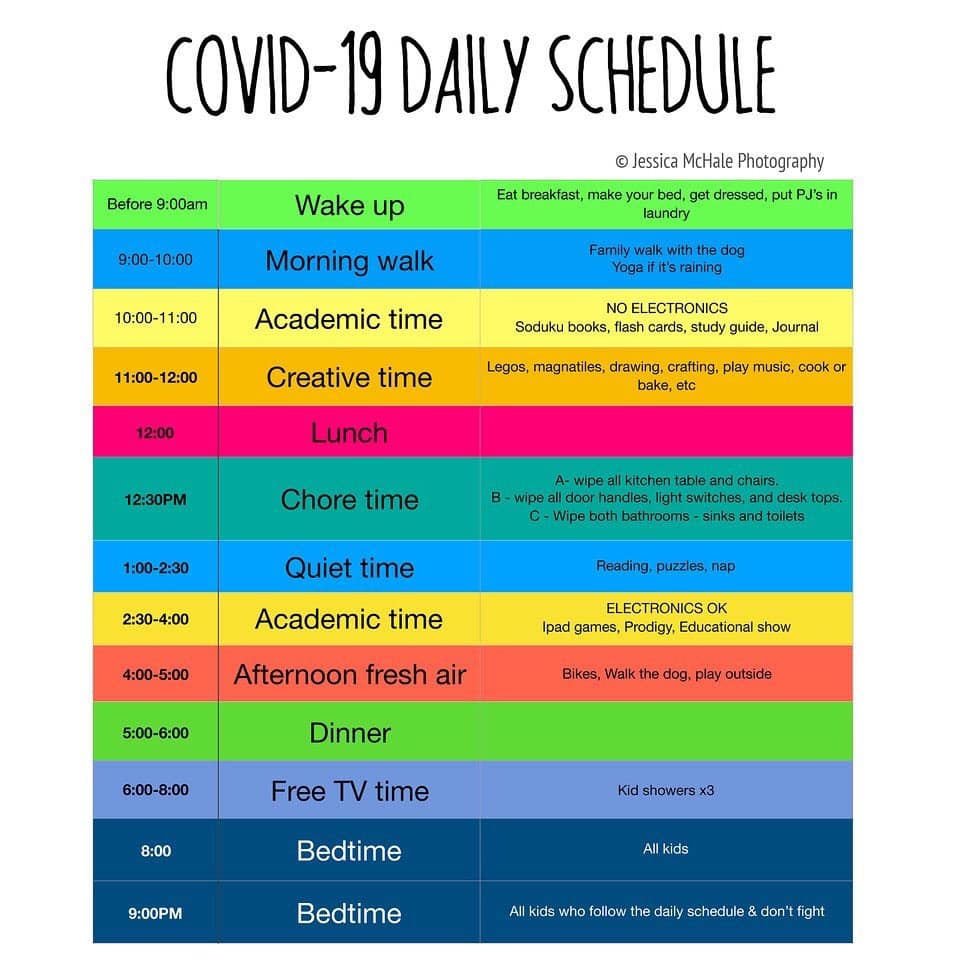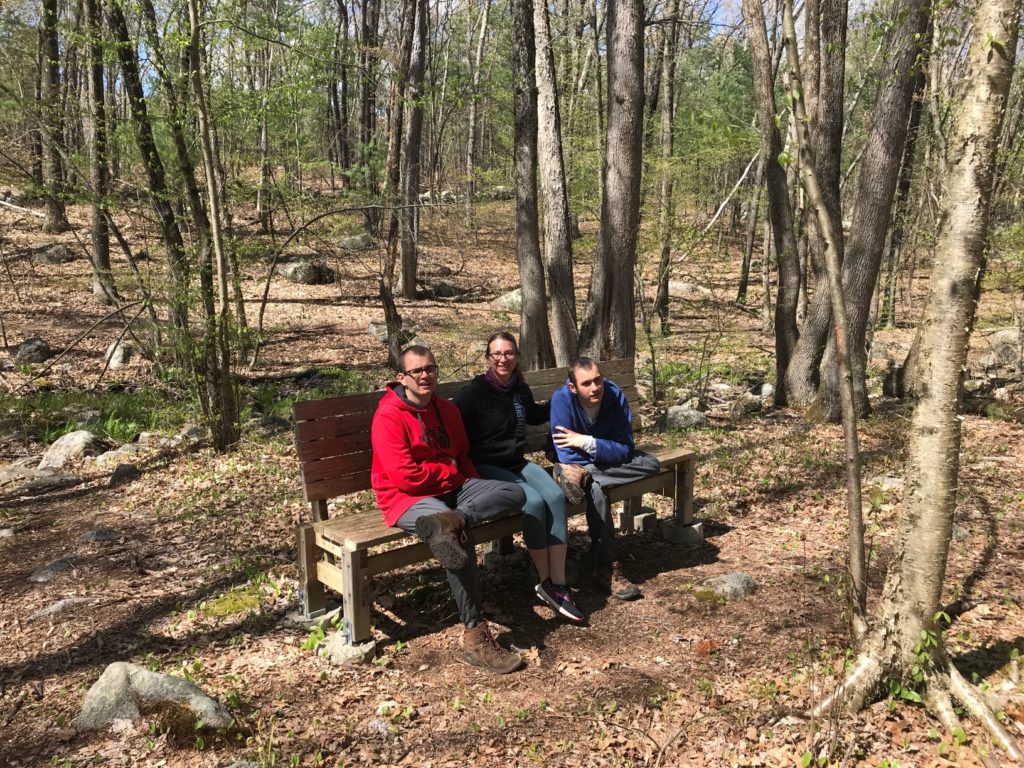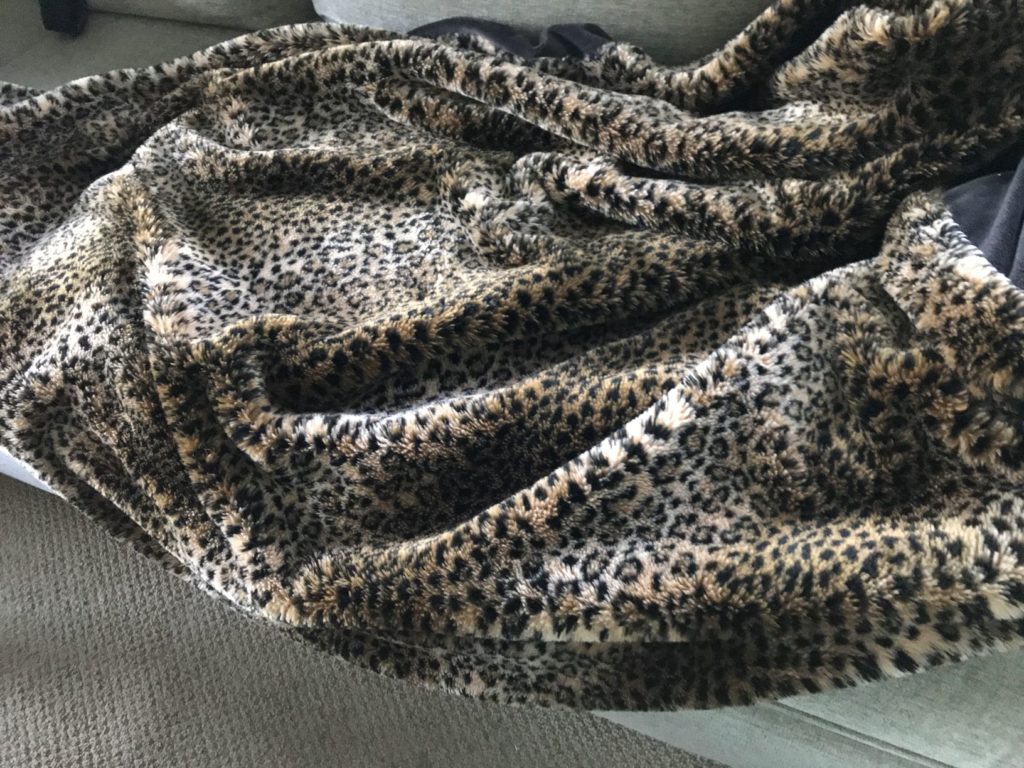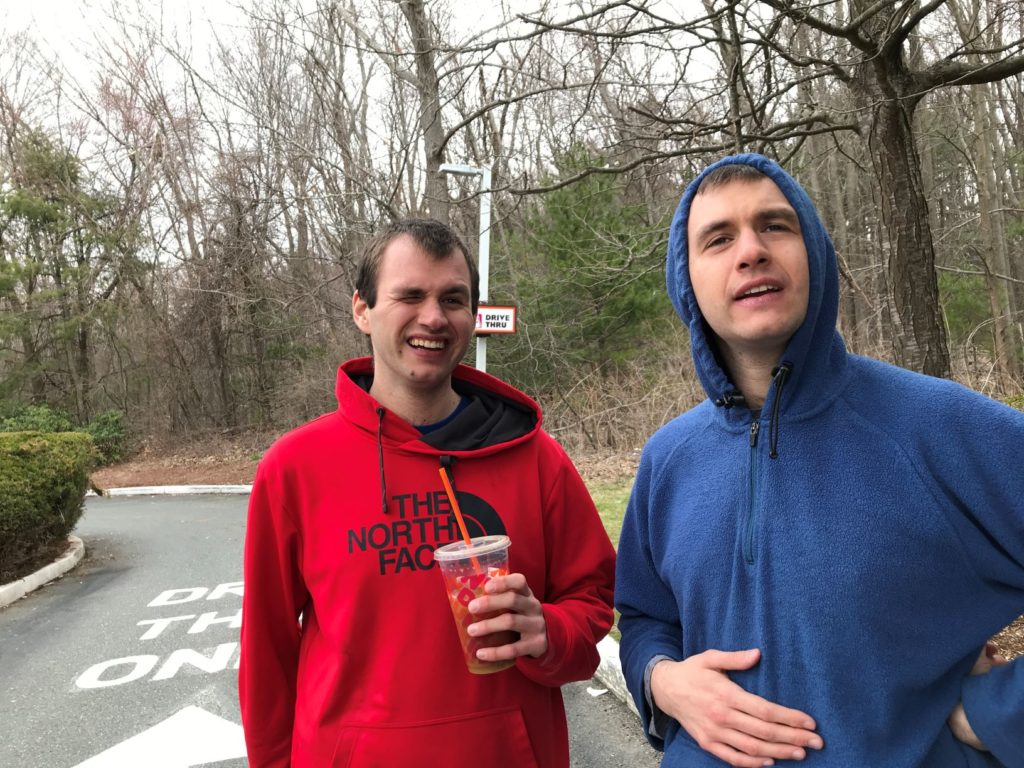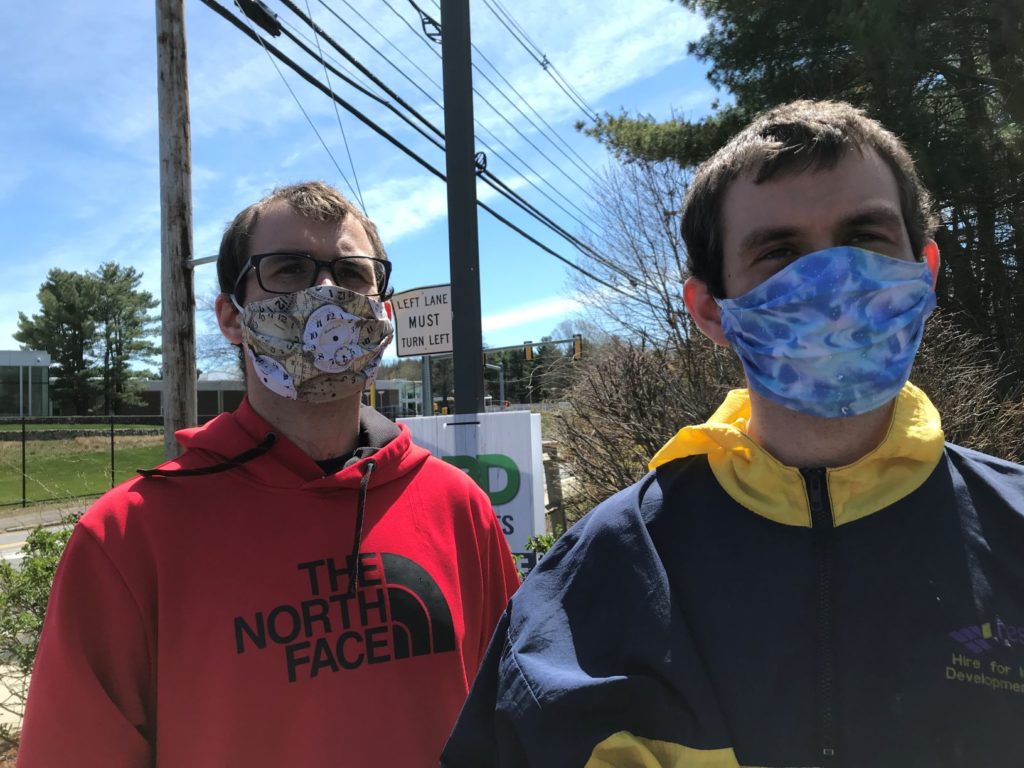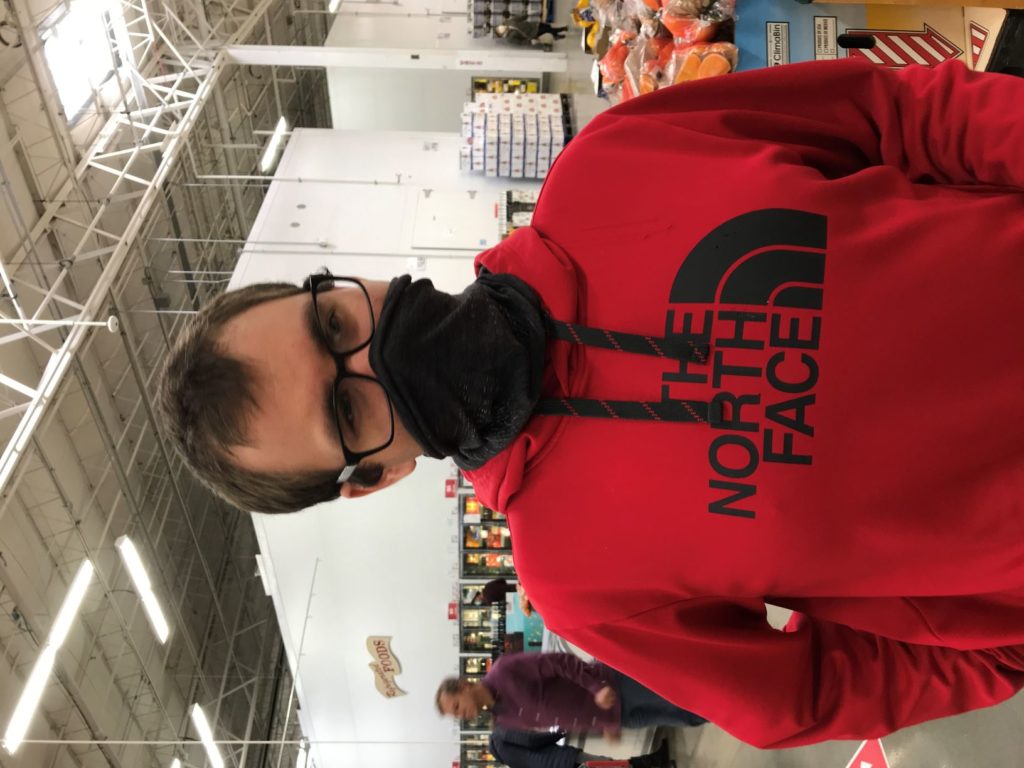In the giant juggling act that is COVID life now, when business models are rewriting themselves, almost everyone has reframed their day, and reexamined their place in the world. The place is usually no longer a physical dot on a map anymore. Many of us strain for an equilibrium in where and who we are, as frothy seas toss our tender little life raft.
I think I have found my twin sons’ new best place. On their own two feet.
I call it the 100-Mile Day program. The traditional adult day program model for disabled individuals was typically a location where individuals gathered – a hub for community volunteering and work, a centering place from which goals were defined and services delivered. Self-directed programming initiatives existed, at least in Massachusetts, but had limited adoption given the difficulty in hiring and maintaining staff for an admittedly challenging population.
Now parents and caregivers supporting the disabled are it. Suddenly it was up to us to cobble together some structure within our walls that kept our kids safe, busy and half-sane. The lucky among us got to do so while juggling a full-time job. The unlucky got more time to play teacher, but the added financial stress.
In those early days Facebook groups for parents of special kids were awash with ideas of how to help your special individual cope. I practically lived there. Several hours daily I clipped links to virtual zoo tours, read-to-me story time, Coronavirus social stories to explain what was going on, and more.
The previously posted COVID-19 Daily Schedule was my guide, but it didn’t entirely fit. I need to work in early mornings even if I clamp it to only essentials, and their “academics” at age 26 given their flavor of autism requires placing everything in a functional context of a daily life skill – meaning Mom or a helper has to guide it. Not something easily done when you’re supposed to write cogent drafts with your client’s key message.
Buried in a voluminous email was a link to the 100-Mile Challenge, a non-profit first founded to attack childhood obesity. It promoted a 26-day, walk as much as you can initiative to get kids moving instead of spending an indefinite future sitting in front of a screen.
Being avid hikers, a long daily walk was a natural for us. We usually walk the 2.4 mile loop around our neighborhood 3-5 times weekly, plus swimming and occasional rainy day walks at the gym, and our weekend 5-8 mile hikes. But the life-changing spark was when I realized a cut-back road lead toward a Dunkin’ location in a gas station – and that the final 0.2 miles had sidewalks. Laughingly calling it the Dunkin’ Trail, it became the boys’ new nirvana.
I used to think it was the iced coffee – or the free mocha shot our new favorite barista, Miranda, snuck into their cup along with her scribbled smiley-face next to the boy’s names. Or the occasional donut. Or the fresh air, and new scenery beyond our neighborhood.
Now I know it is far more. Will and Jeff don’t speak enough to tell me with words why their #1, immediate and broad beaming smile-inducing choice when I show pictures on the AAC software is a walk to Dunkin’s. Yet their grins are so radiant – their sing-songy self talk so clear and joyful – that I know something is meaningful, even if I know not the word to hold it.
So walking is the heart of our day program. Morning after rising is free time, then we do breakfast and do the morning toothbrush/shave/shower routine that drives toward increased independence. It’s like we did when a bus beep-beeped in our driveway to drive 25 minutes north, except there’s more free time.
By week 3 their day program began offering daily Zoom morning meetings and afternoon exercise class, and they were early to do so. We walk as soon as morning meeting is done, and until exercise class starts, usually throwing lunch and its ADL goal-building skills in there. If it rains, there’s in-home fine motor skill building and ADL practice such as folding shirts, as directed by my incredible skills trainer helper.
As time’s progressed, we’ve added items. At first prior to the day program’s Zooms we participated in family dance classes, like Zumba for autism. I loved them but the dance moves were hard to follow and eventually the boys stopped doing them in favor of sitting on bean bag chairs. So family dance became occasional, until each young man started telling me with their AAC choices that the wanted to do other things.
Since the helps leaves between 3-4 pm after doing inside activities like folding clothes or 1:1 number practice work, I occasionally add new activities during this time block, like Jeff’s weekly art therapy class, a Will knot-tying class, and drum circle.
Where the schedule falls down is at 4 pm, when I usually still have to work and the boys must self-start with some minimal assistance on independent play for 60-90 minutes until one of us starts dinner and they begin helping with peeling carrots, opening cans, setting the table and the like. If not highly engaged Will will run upstairs to disrobe – at least he’s doing so in his room which is semi-normative. Laugh about a naked room all you want, but I don’t believe this is appropriate behavior for any setting where others live, so I prohibit it. I also prohibit his wearing boxer shorts around the house during the day, as a non-normative behavior I wouldn’t want I used to feel guilty about having to work but truly, these men have to be able to navigate free time without overt direction.
Today as I write this, the boys have walked over 200 miles in the six weeks since April 30 when we began the 100-miles challenge. They’re averaging 100 miles in 20 days, helped by the weekends where we’ve been clocking 7-8 miles as we added restaurants and conservation trails as destinations. Each has lost about 5 lbs of early COVID indulgence-weight. Will in particular has quickened his pace, such that we exceed the time estimates of my iPhone’s GPS app and its walk–time estimator. As the late-day sun soothes and my own arthritic bones need loosening, the boys eagerly jump up for a quick mile lap around our adjoining cul-de-sacs.
Can walking bring meaning? Is movement a right and fitting heart of a life? Can someone center their day around physical activity and from that, be better at whatever else engages him?
The metric is evolving, and qualitative. When Jeff is 10 paces ahead, stops as soon as I ask, turns to face me, and smiles. When Will, with a cock-eyed grin and sing-song invented tunes, looks me squarely in the eye, and beams. When each listens to long-worked-on safety commands like moving to the side of the road. When we return to our physical home, and the bodily home seems calmer, at ease, rested in their favorite La-Z-Boy chairs as if skin and nerves and jumpy organism unite.
We’re all walking a new path, especially now. Achieving a full, meaningful life is no longer simple task, as if it ever was for the challenged. My sons’ 100-mile day program symbolizes the person-centered planning we’re supposed to do – and that somehow formalistic day programs shunt as they seek to serve the many often at the expense of the individual. Walking sustains my sons from a place I don’t fully understand, but note so clearly. My sons are unfettered at home with me or 1-2 caregivers to truly individualize their programming, versus at the day program where the capabilities of the lowest common denominator dictate time and activities in 45 minute time slots, on a day everyone shows up for work, or before some staffer has to leave to serve the needs of others. Now my sons get what they really want, need and desire.
I knew it before, sort of, but seeing it so clearly has upended my own vision for what they want and need for a rich and purposeful life. This is not just a COVID-19 bypass, or a stop-gap measure until the state reopens day programs.
Will and Jeff’s daily bi-ped journeys are leading them to their next, best selves. They themselves are geotracing a map to what they need – a map for the rest of us to follow.
